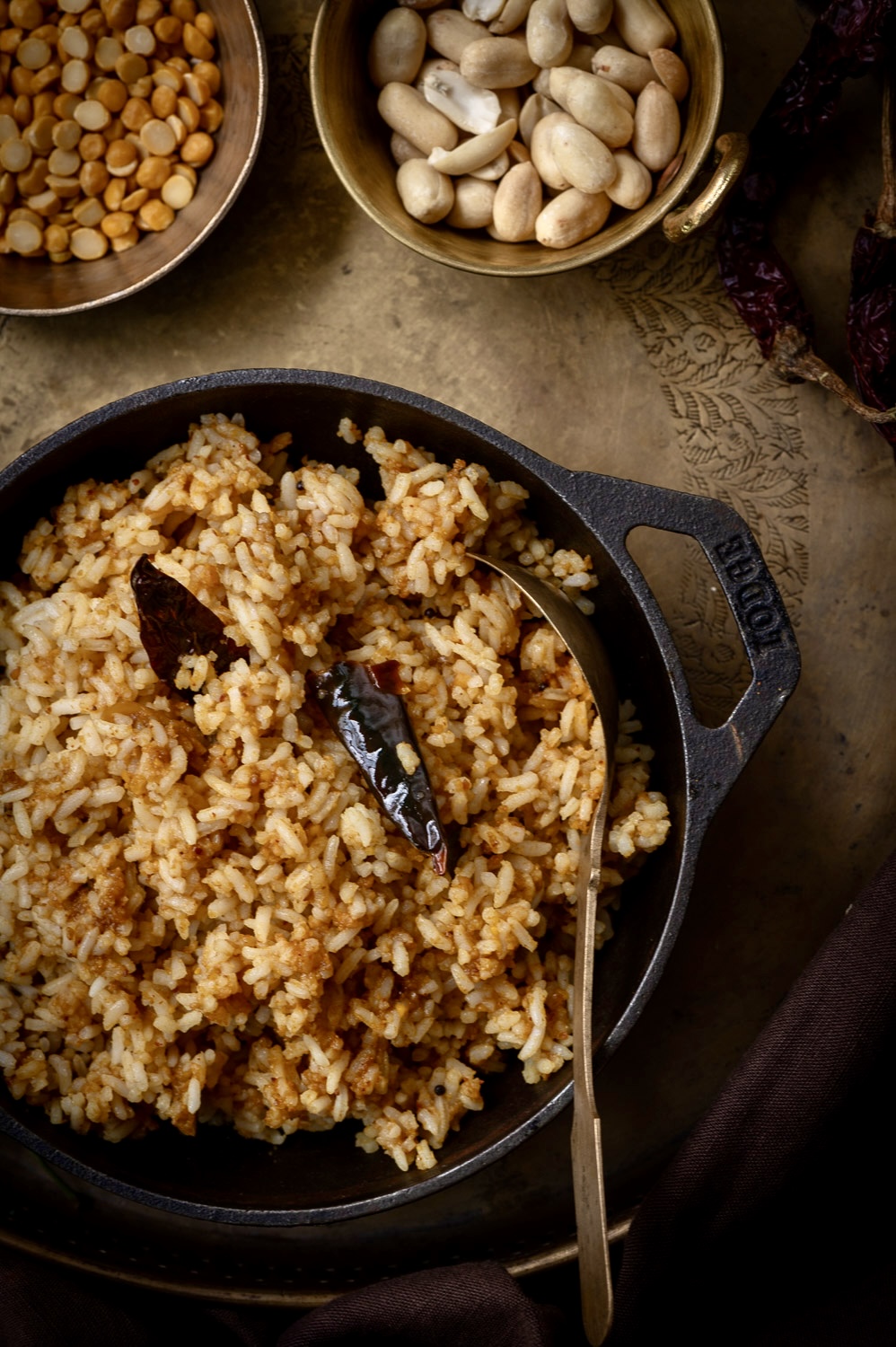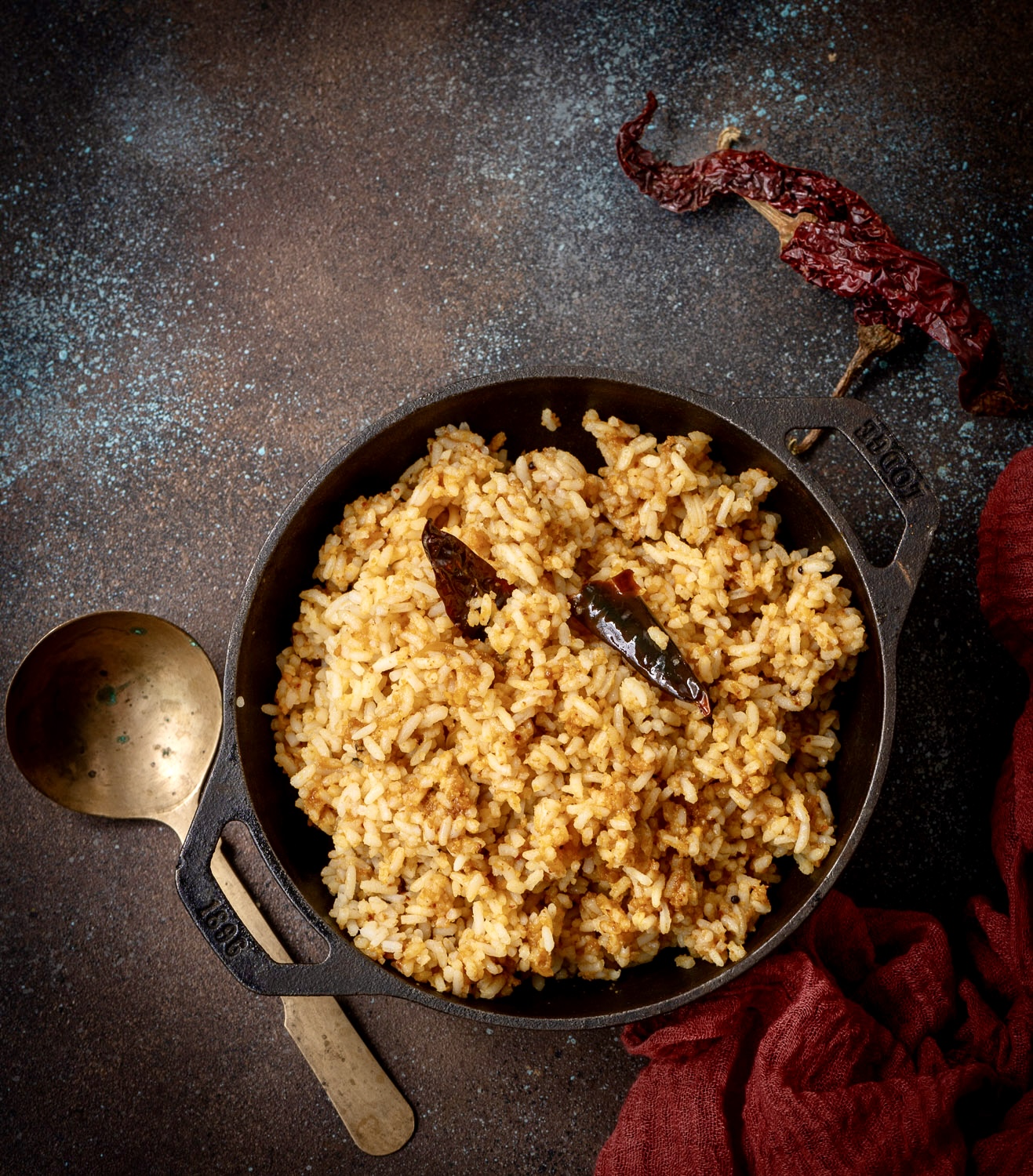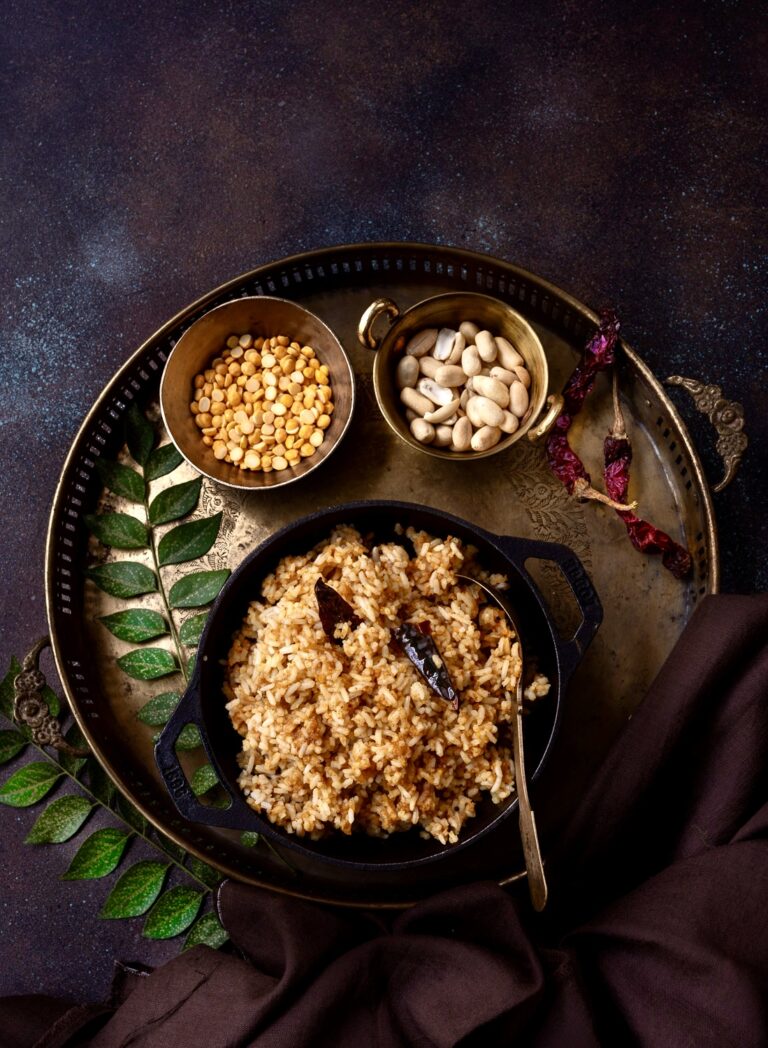I may sound like I am repeating myself, but what I am about to say (again) is just one of those basic facts about me: if you put a gun to my head and ask me to choose whether I like Gujarati cuisine or Tamil cuisine better, I would very quickly and quite happily admit that it’s the latter. Even though I am Gujarati, I grew up here in Chennai, and as much as I love the food of my culture, the food of my surroundings has my heart. Among the dishes I cherish most is tamarind rice, and I’ll tell you why.
South India has been described as the rice bowl of the country, and there are hundreds of varieties grown here, as I’ve discussed in the past. The different cuisines in the Southern states also lean heavily towards rice dishes, as well as those that use rice flour as a chief ingredient. As with all parts of India, traditional food is always thoughtfully designed to serve two objectives in particular: healthiness and seasonality. Certain items are prepared year-round, and I believe tamarind rice falls into this category.
That impression may have been formed of course by the fact that tamarind rice is the standard prasadam, or food served to the deities and then to devotees, across temples in South India. Perhaps that is because it is fast and easy to make, and because the tamarind acts like a preservative, allowing the dish to keep better as well as to travel a bit – which is great if someone wants to take some home after a pilgrimage.
Moreover, a selection of flavourful dishes is also always served on the side in elaborate banana leaf meals at special events like weddings. Coconut rice and lemon rice will be present as well, but it’s the tamarind rice that I always reach out for most eagerly.
Tamarind itself is an ingredient that’s important in this part of the world. Its English name comes from the Arabic term “tamr hindī”, or “date of India”, referencing its value as a trade item. While the tree is indigenous to Africa, it is so thoroughly naturalized on the Indian subcontinent that even its scientific name, Tamarindus indica, carries a nod to this region. Not only was the fruit coveted globally, but the tree has been valued here through time. I remember encountering many stories in books as a child in which tamarind trees were considered the trees of travellers. This was because they were planted alongside routes in order to provide shade and coolness. The canopy is huge and a person or small group can easily rest beneath one. There are still many tamarind trees around in Chennai today, though perhaps not as many as when I was growing up. I have fond memories of the ones that grew in my school’s compound. We would wait for strong breezes to blow the fruit off, to the ground, and race to collect them.
The raw, deseeded fruit can be soaked and used to flavour food, or else made into a chutney, which my mother would prepare quite often back then. She would also make tamarind rice, and let me be honest – as much as I am in awe of her culinary skills, I’ll be honest and say that it wasn’t her finest dish. It was sort of her own version, and I knew even back then that it wasn’t quite as tasty as the tamarind rice served in the temple near my grandparents’ house. Still, it was a start, and I appreciate that for a busy homemaker it would have been a simple dish to put together on days when she had less time to cook.
Nowadays, there are even easier ways of making tamarind rice. Readymade mixtures are sold in shops, almost in a pickle form, and mixing a dollop with cooked rice is all it takes. But I’ve always felt that there’s a special pleasure in making things from scratch. This particular recipe was taught to me by a sloka teacher I had a few years ago. After classes, she would come into my kitchen and teach me some authentic recipes, including this ginger chutney. She made a delicious tamarind rice paste, and the method she taught me is what goes into this preparation.
As for the rice used, I’ve gone ahead with the common ponni, which is a small-grained, boiled variety. This is easily accessible to me, and I suggest you choose one that is available wherever you are in the world. A short, stout rice works best to absorb the deep flavours of the paste and spices.

Tamarind Rice
(Yield: Serves 4)
2 cups cooked rice
Spice Powder
½ teaspoon methi/fenugreek seeds
2 teaspoons coriander seeds
2 teaspoons sesame seeds
6-8 dry red chilies
1 teaspoon whole black pepper
Tamarind paste
¼ cup sesame oil
1 teaspoon mustard seeds
2 teaspoons channa dal
½ teaspoon turmeric
3-4 dry red chilies
1 teaspoon urad dal
A handful of curry leaves
½ teaspoon asafoetida powder
¼ cup peanuts
Salt to taste
1 tablespoon jaggery
1 large lime-sized ball of tamarind
2 cups water
Dry roast each of the spice powder ingredients separately. Allow to cool and then powder them all together. Set aside. Soak the tamarind ball in warm water. Once soaked, squeeze and extract the pulp as much as possible. Discard the fibre.
Heat a pan and add the oil. Now, add the mustard seeds, chillies, channa dal and urad dal. Roast slightly and then add the asafoetida and curry leaves.
Add the tamarind pulp, salt and turmeric powder. Stir. Cover and allow to simmer until the raw smell of tamarind goes away. This will take approximately 10-15 minutes.
Remove from the flame and allow to cool.
To assemble the tamarind rice, put the 2 cups of cooked rice in a bowl. Add ¼ cup of the tamarind mixture. Using your hands, gently mix it well into the rice. Add 1 tablespoon of sesame oil to bring all the flavours together. Tamarind rice need not be eaten hot, and this is now ready to serve. Store the remaining tamarind mixture in a glass jar and refrigerate. I’d say it can be used for about a couple of weeks.
Rice is such a fixture in many homes in Asia and other parts of the world, and it can get a little boring. I have more recipes in the archives that may bring some novelty to your rice consumption, and I hope you’ll explore them.


